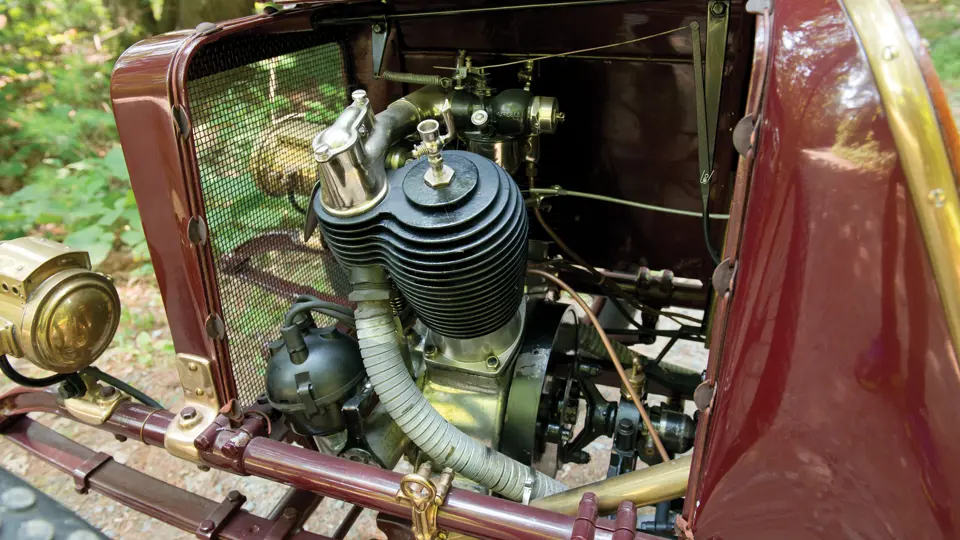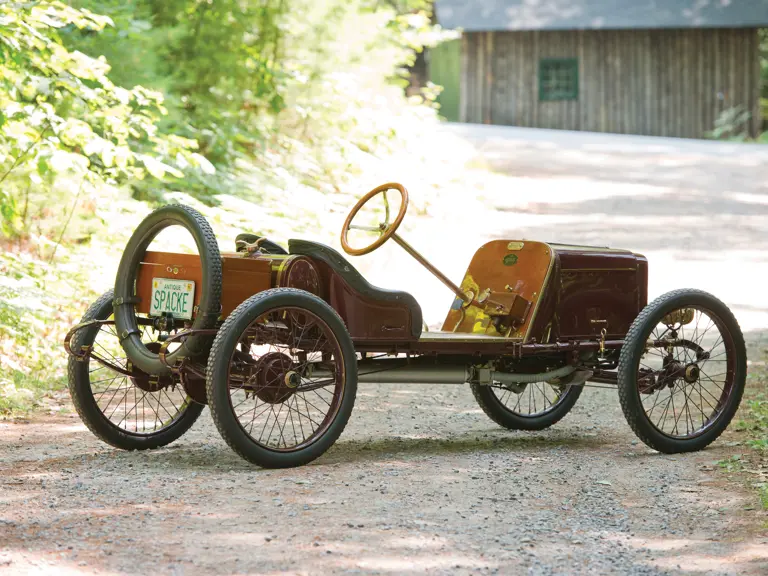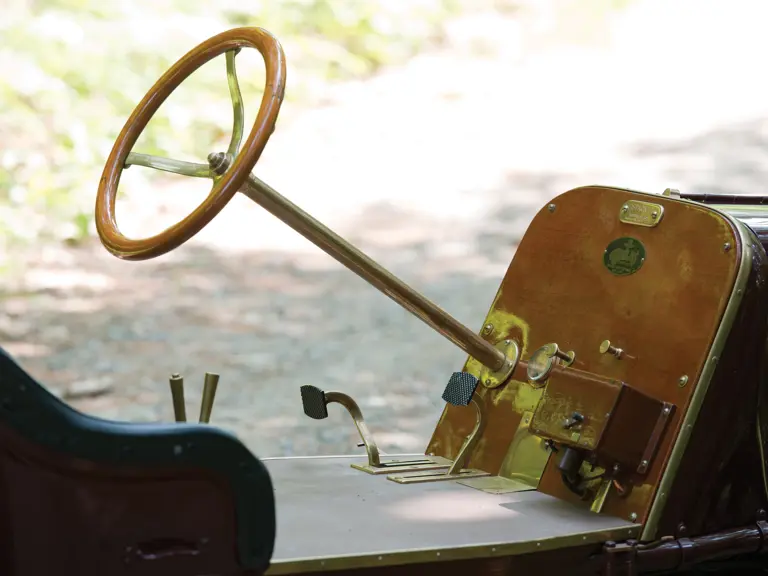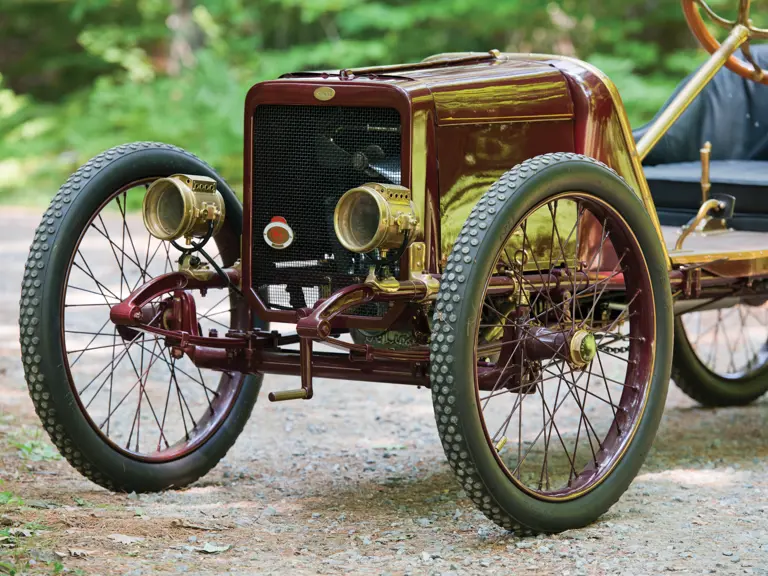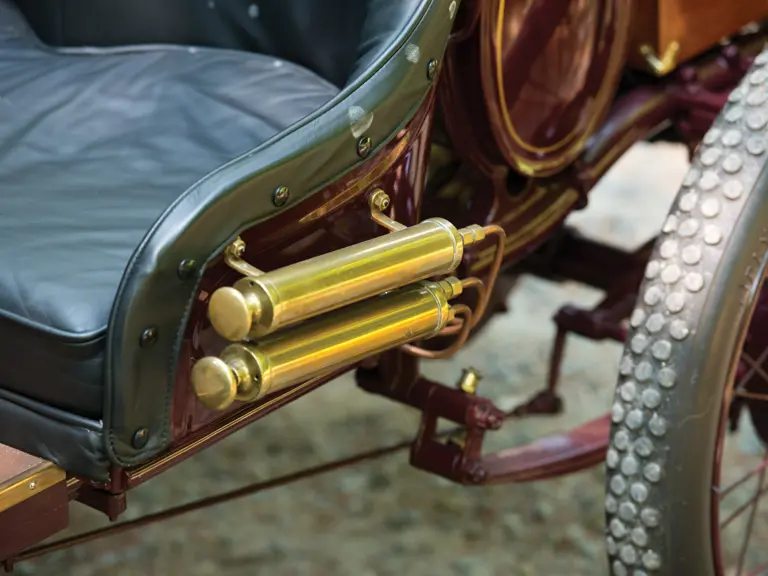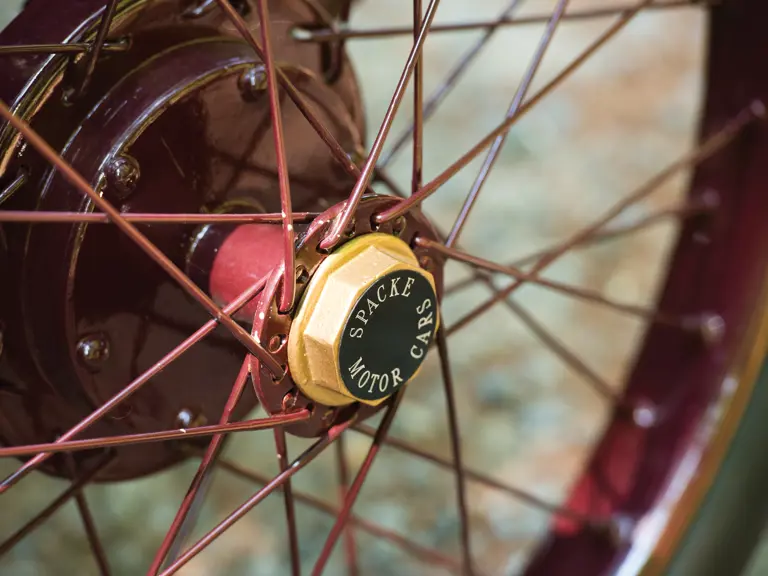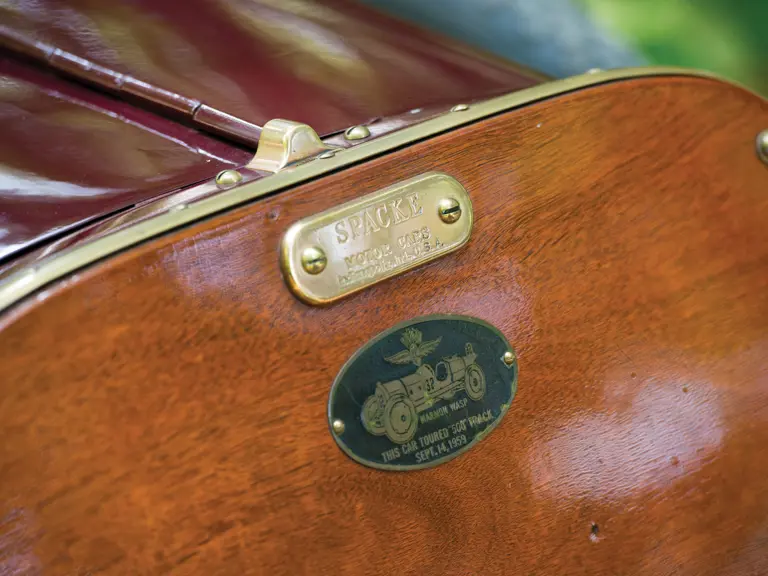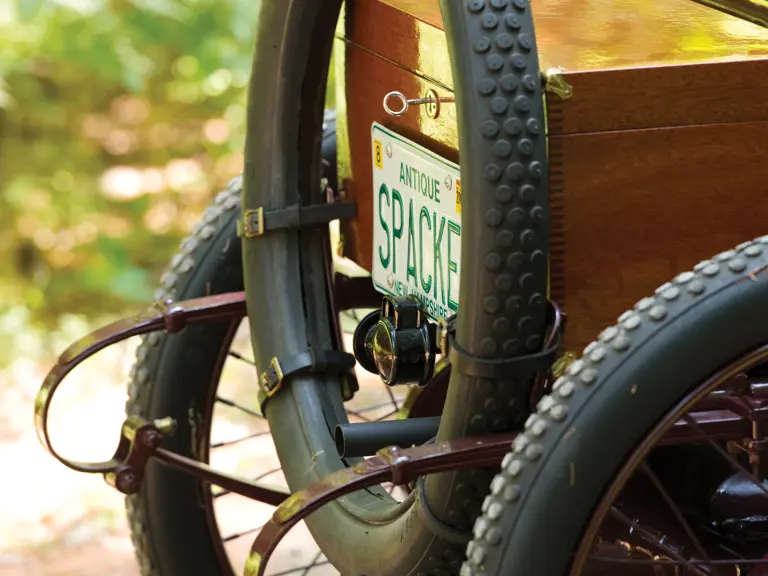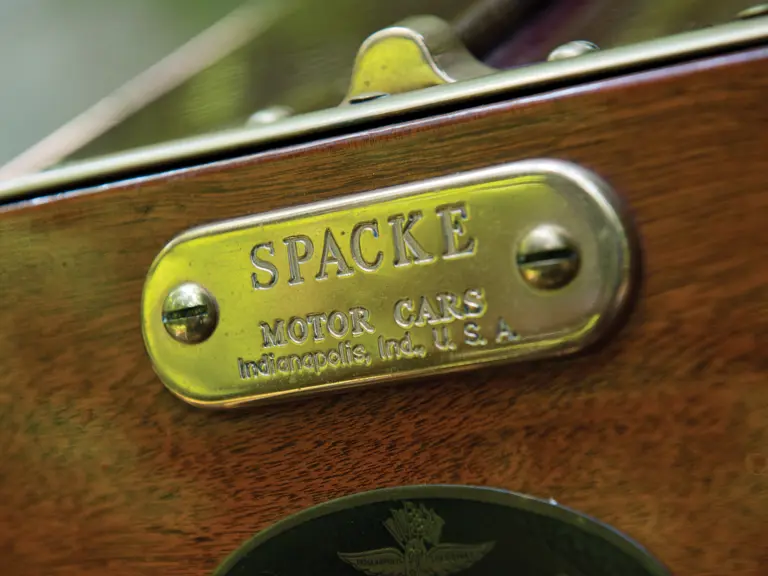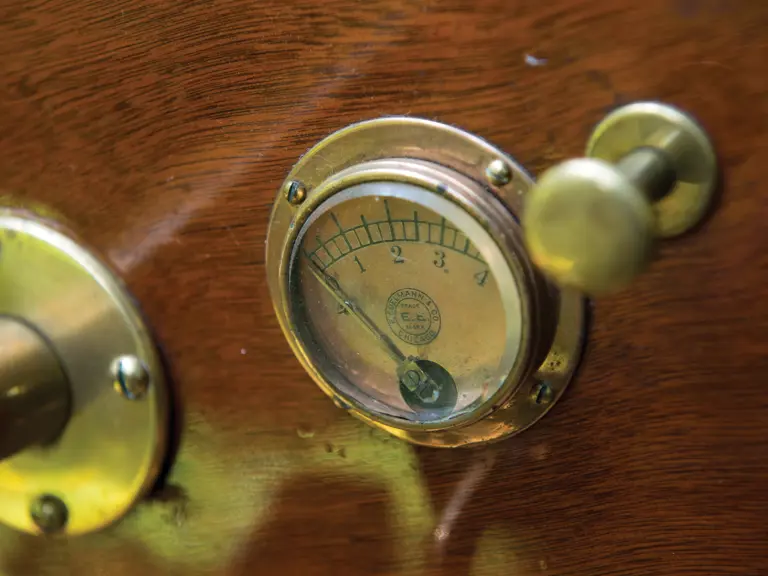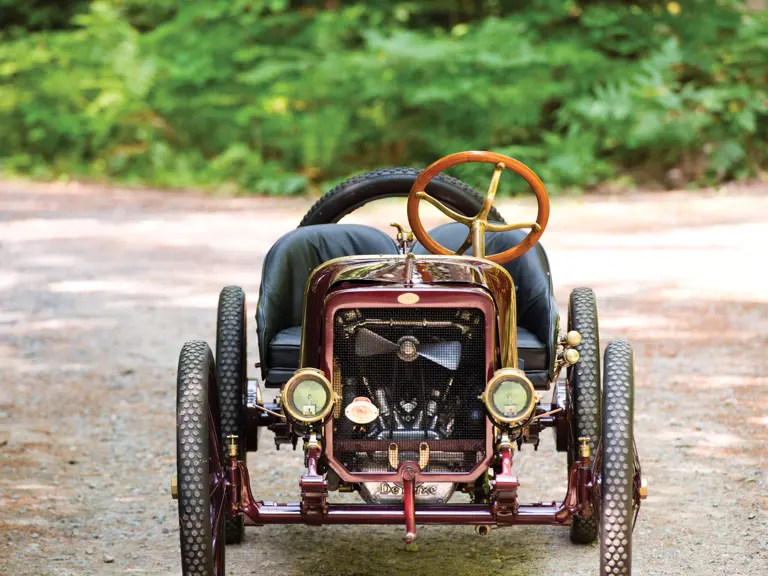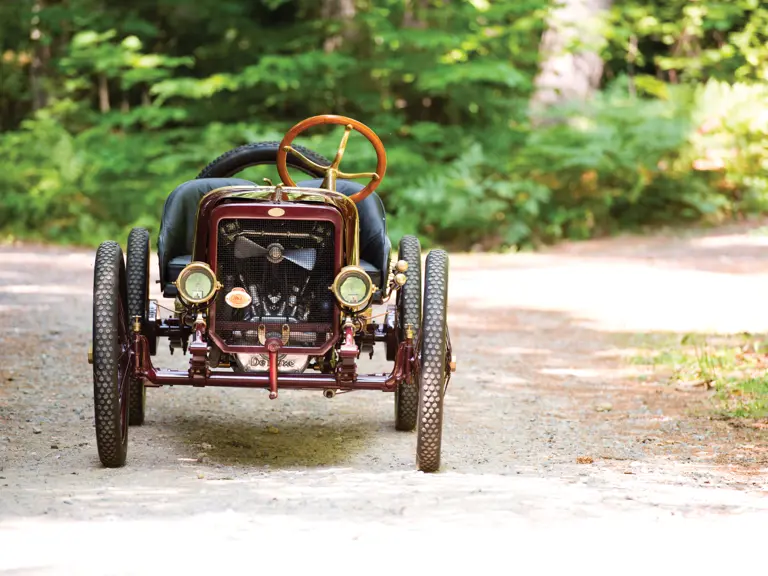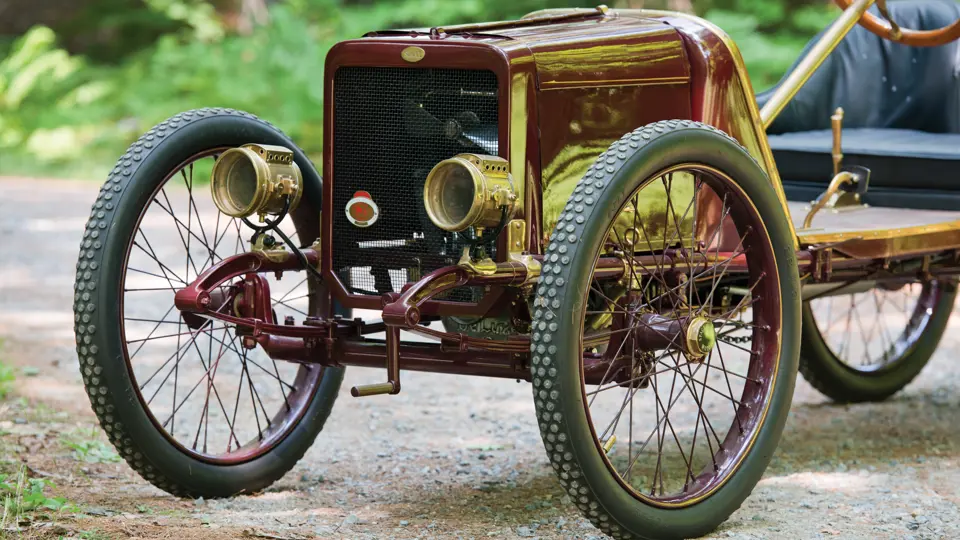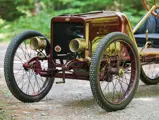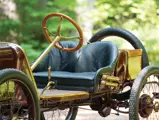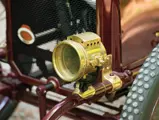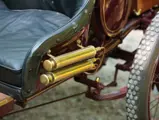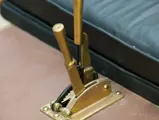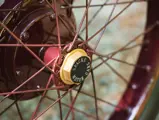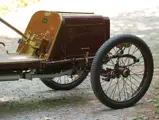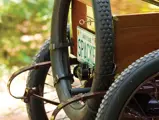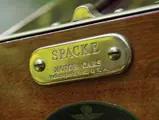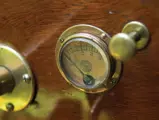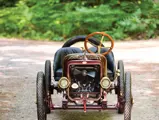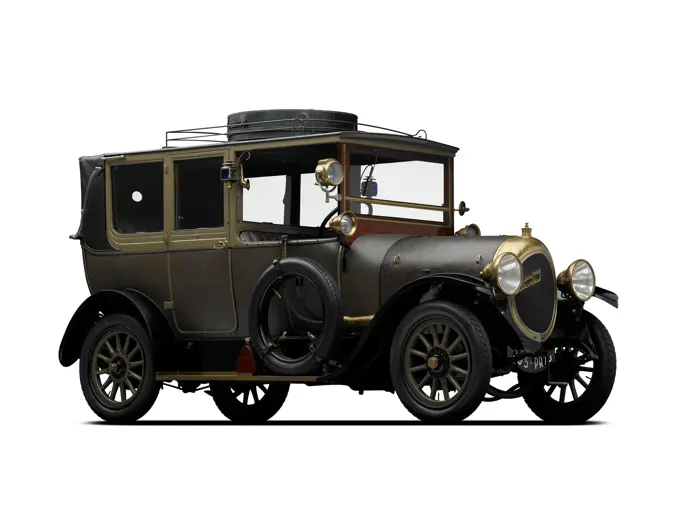 | Hershey, Pennsylvania
| Hershey, Pennsylvania
13 bhp, 70.62 cu. in. engine, two-speed planetary transmission with reverse, live front axle, solid rear axle with quarter-elliptic leaf-spring suspension, and rear-wheel mechanical brakes. Wheelbase: 90 in.
At a time when Indianapolis easily rivaled Detroit for the inventiveness of its automotive engineers, Fred W. Spacke became one of the Crown City’s early motoring pioneers. Usually, he was supplying others with vehicles rather than building his own. His Spacke Machine Company thrived, as it built air-cooled one- and two-cylinder engines, first for motorcycles and then for the “cyclecars” that became popular in Europe and then in the United States around the time of the Great War.
Spacke’s concern would later be sold, and by 1919, it was building its own cyclecar, one with air-cooled, 13-horsepower power. What is interesting about John Moir’s Spacke, which is one of only three known cars bearing the company’s name, is that it is believed to have pre-dated that creation and was built in either 1912 or 1913. Its former owner, renowned collector Henry Austin Clark Jr., dated the little creation as a 1912, while Mr. Moir believes it hails from 1913. It is very much unlike the other two surviving Spackes, which have full roadster-style bodywork, as the Moir car is “barely there,” with two seats mounted to a simple steel chassis, no fenders, and headlights as the only real ornamentation. No numbers are present anywhere on the car, leading Mr. Moir to believe, along with the early date long assigned to the car and its rather crude construction, that it was probably a prototype or, in his own words, “built for someone’s girlfriend.”
Mr. Moir purchased the Spacke from Dana Smith in 1992. At this time, it was painted green and cream, with signs that it had originally been red, and it wore a plaque that testified to it having been driven on the track at Indianapolis in 1959. David Steinman, the collection’s favored restorer, performed a beautiful restoration on the car and refinished it in an unusual but attractive deep mahogany, black leather upholstery, and subtle brass trim. As the car has been minimally driven since, it remains in lovely, fresh condition throughout, and it would still be appropriate for continued display and use in AACA events. It is accompanied by a small file of documentation, which includes photographs of the car as it was acquired, some information on the company, and a partial original Spacke brochure.
For sheer popularity and charm, this little gem is unbeatable.
Please note that this lot is sold on a Bill of Sale.

